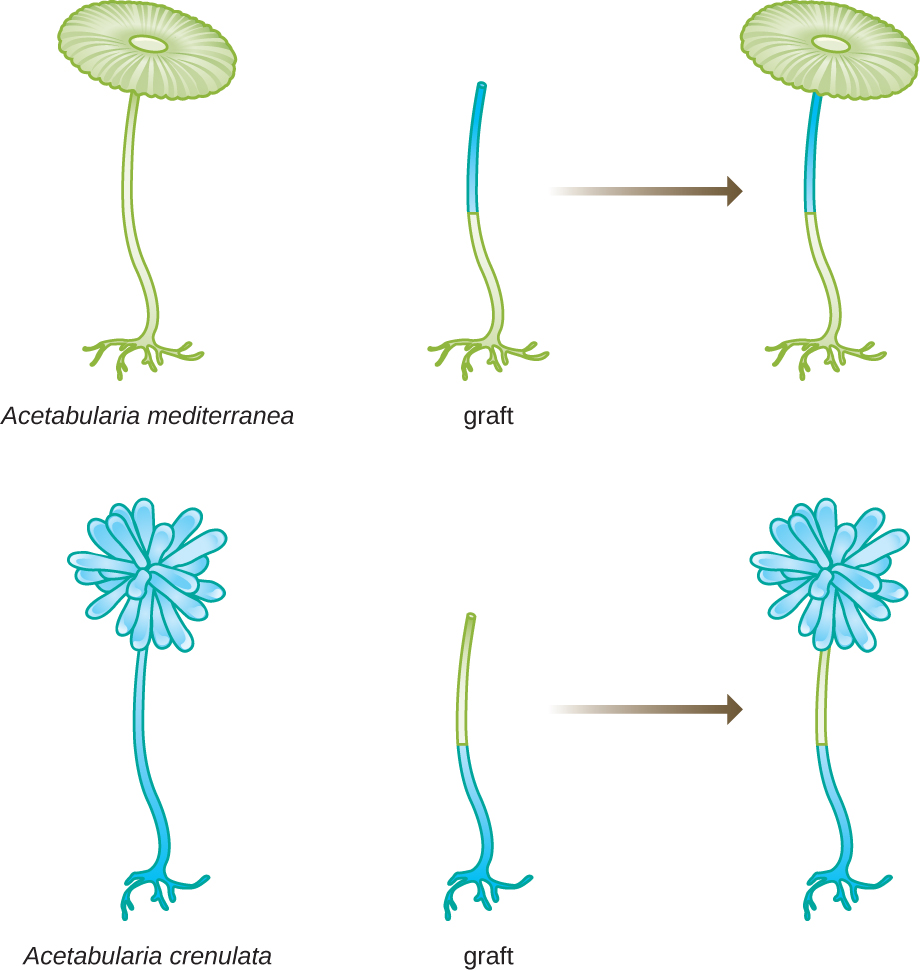| << Chapter < Page | Chapter >> Page > |
In a clever set of experiments in the 1930s and 1940s, German scientist Joachim Hämmerling (1901–1980), using the single-celled alga Acetabularia as a microbial model, established that the genetic information in a eukaryotic cell is housed within the nucleus . Acetabularia spp. are unusually large algal cells that grow asymmetrically, forming a “foot” containing the nucleus, which is used for substrate attachment; a stalk; and an umbrella-like cap—structures that can all be easily seen with the naked eye. In an early set of experiments, Hämmerling removed either the cap or the foot of the cells and observed whether new caps or feet were regenerated ( [link] ). He found that when the foot of these cells was removed, new feet did not grow; however, when caps were removed from the cells, new caps were regenerated. This suggested that the hereditary information was located in the nucleus-containing foot of each cell.

In another set of experiments, Hämmerling used two species of Acetabularia that have different cap morphologies, A. crenulata and A. mediterranea ( [link] ). He cut the caps from both types of cells and then grafted the stalk from an A. crenulata onto an A. mediterranea foot, and vice versa. Over time, he observed that the grafted cell with the A. crenulata foot and A. mediterranea stalk developed a cap with the A. crenulata morphology. Conversely, the grafted cell with the A. mediterranea foot and A. crenulata stalk developed a cap with the A. mediterranea morphology. He microscopically confirmed the presence of nuclei in the feet of these cells and attributed the development of these cap morphologies to the nucleus of each grafted cell. Thus, he showed experimentally that the nucleus was the location of genetic material that dictated a cell’s properties.

Another microbial model, the red bread mold Neurospora crassa , was used by George Beadle and Edward Tatum to demonstrate the relationship between genes and the proteins they encode. Beadle had worked with fruit flies in Morgan ’s laboratory but found them too complex to perform certain types of experiments. N. crassa , on the other hand, is a simpler organism and has the ability to grow on a minimal medium because it contains enzymatic pathways that allow it to use the medium to produce its own vitamins and amino acids.

Notification Switch
Would you like to follow the 'Microbiology' conversation and receive update notifications?